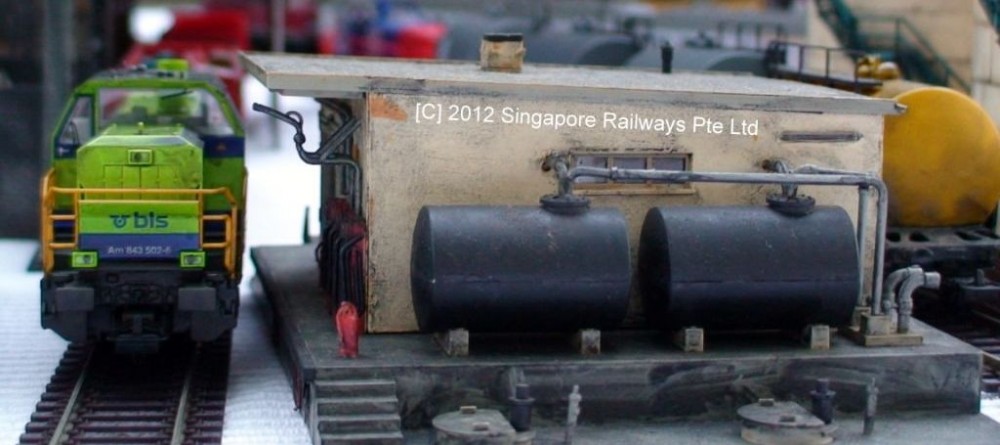Model trains are meant to be enjoyed on tracks! After putting it off for 36 years, I summoned my courage to build a baseboard. I have since amassed a fair number of OO gauge locos and rolling stock, and more recently, HO stuff from Singapore Railways Pte Ltd (SRPL). I wanted a layout with long tracks, and for two trains to run continuously. Thomas (SRPL) gave me some ideas and I finally settled on a dog-boned layout. I downloaded the plans from the internet. The outermost radius measures 572 mm while the inner radius is 505 mm. The baseboard measures 3.2 m on the longest side and is 1.3 m wide. As I wanted the baseboard to be portable, I built it in two main sections and joined them by bolting the two parts together. Building multi-layered tracks is out of the question for now as the baseboard has to be portable. One advantage of this layout design is that I can add in longer straight modules in the center to extend the baseboard indefinitely (if I can find the space)! I had almost enough tracks in my collection to build the layout. All tracks used are Hornby’s standard code 100.
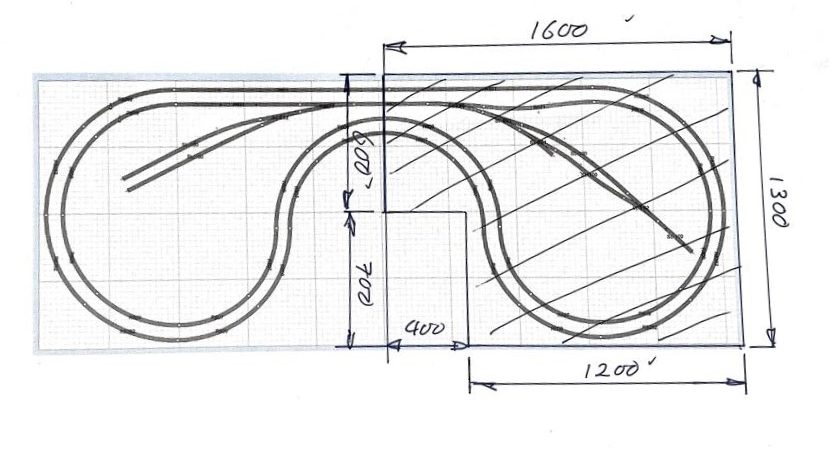
Building the baseboard
Everything that I have read on model rail layouts emphasized on building a strong and rigid baseboard to ensure trouble free running of trains for years. This is even more important if the baseboard is portable. I laid my tracks on the floor and test run with trains before taking the overall measurements for the full-sized baseboard. As I do not have any carpentry skills, I decided to order my wood ready cut from Plywood Online. Besides ensuring straight cut wood, it is a lot faster too (I collected the next day). It took me three times to work out the exact wood dimensions before I confidently sent it to the shop for the order. It pays to check over the dimensions a few times! Always draw the plan on paper with the dimensions clearly. It does give clarity on what is needed. The first quote I received from the wood shop was far too expensive because I used too much plywood. So, I used timber for all the spars and plywood for the outer frame as I wanted the latter to be 75mm wide. This reduced the price considerably by about 50%.
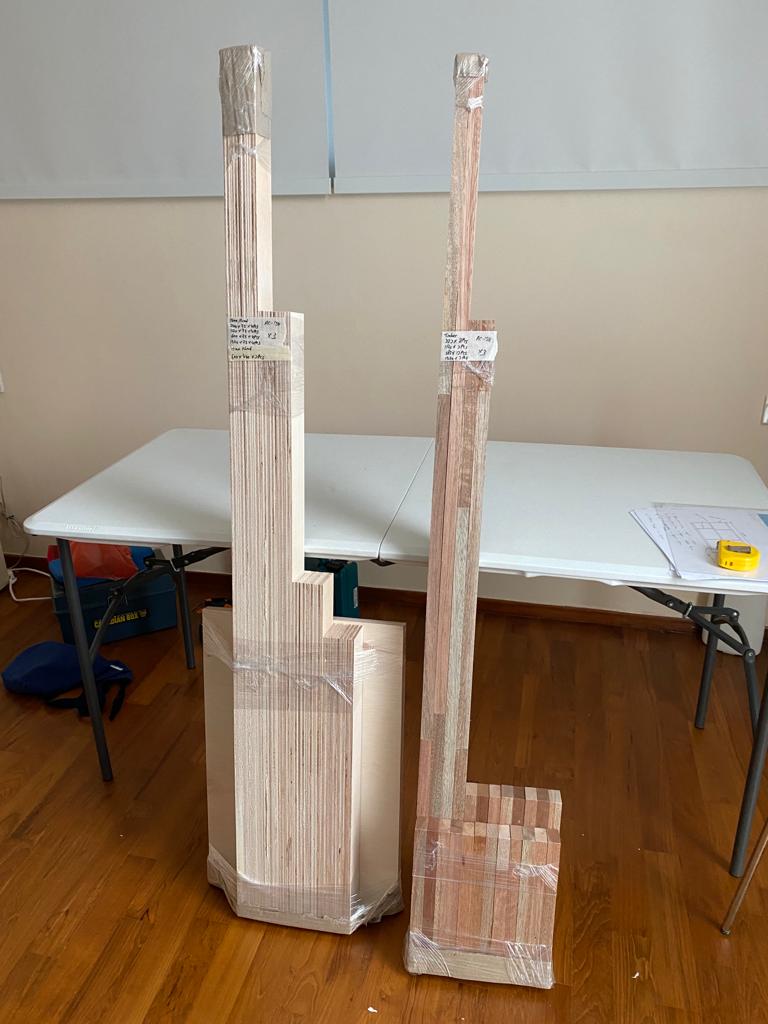
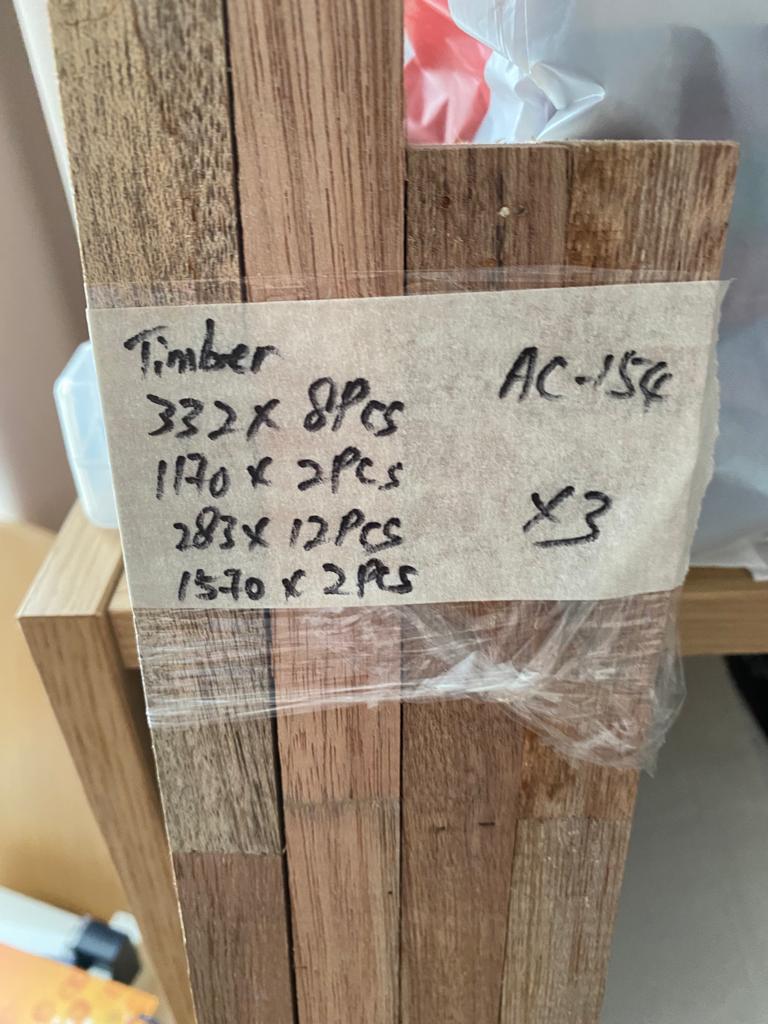
I used a right-angle clamp to ensure my corner joints are square. All holes were pre-drilled with a 2 mm drill bit followed with a countersink drill to ensure the screw head will stay below the surface of the board. I used number 6 x1.5” wood screws and used two screws per timber joint. I did not use wood glue for joints as I forgot all about it! But for fixing the 12mm thick plywood sheet onto the frame, I used both screws and wood glue. I have a table-top vertical band saw and this was invaluable in trimming off excess wood to fit the timber spars in quickly. Finally, I applied a coat of acrylic paint on the top of the wood.
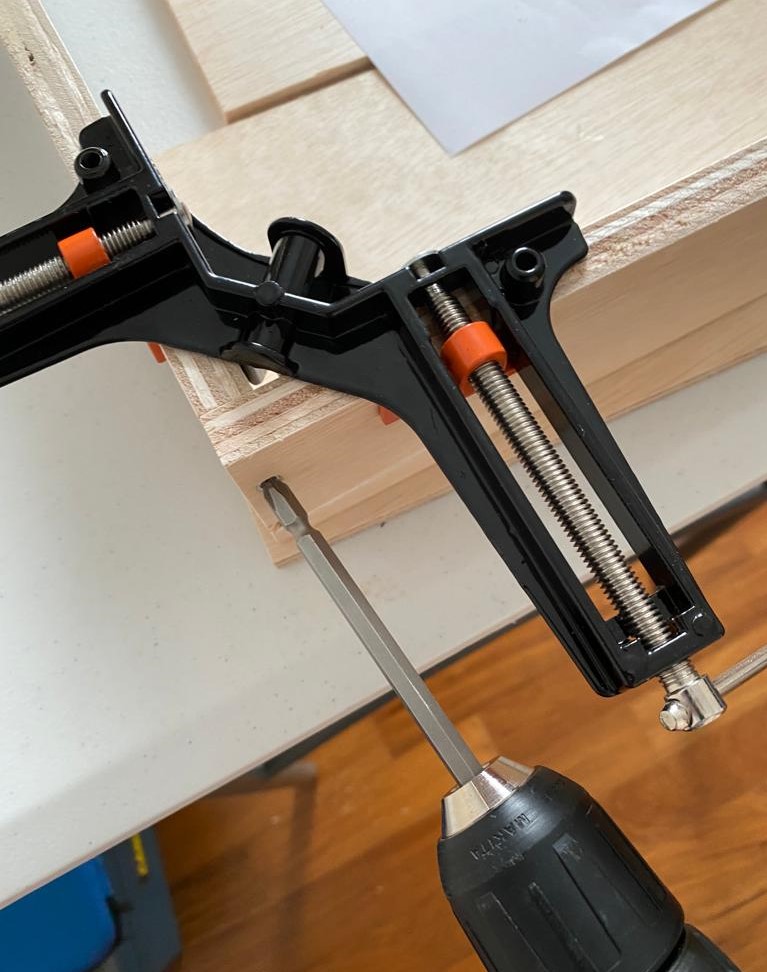

Support for baseboard
For the baseboard support, I took the easy way out. I bought four sets of trestles from IKEA. They turned out to be quite rigid and my base board is well supported. I now have a portable baseboard with supports that could be dismantled.
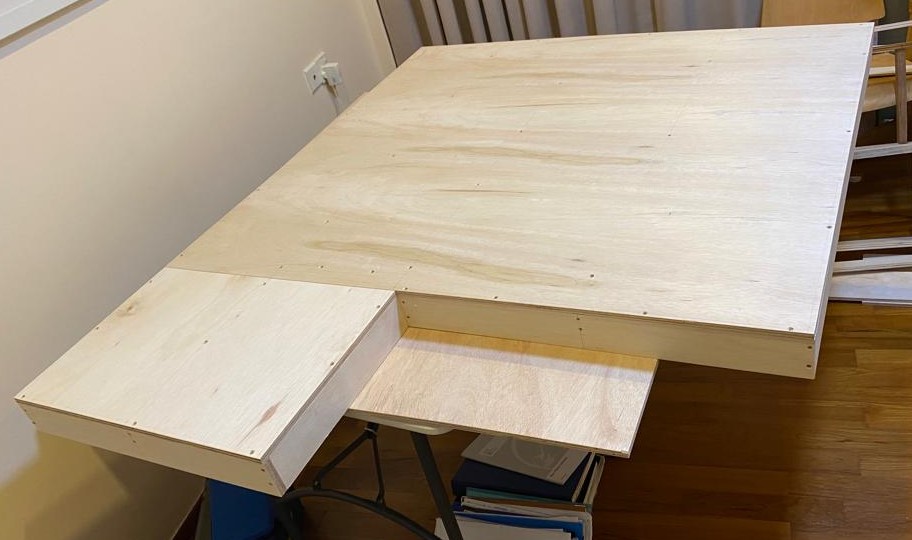
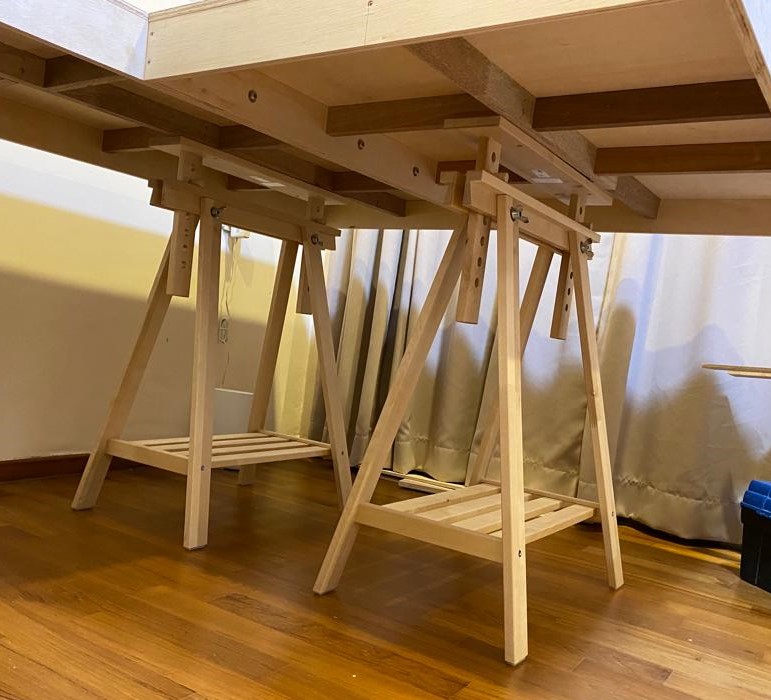
Baseboard alignment
After aligning the two sections of the baseboard and bolting them together with 4 bolts (M8 x 90 mm), it was ready to have the tracks laid out on it. I had track spaces 3D printed out for me and they were extremely useful to ensure the tracks were evenly spaced side-by-side. (The spacers are red colour on the track layout). This ensures longer locos or coaches will not hit another passing train at the curves. I tested with long trains of wagons and coaches, and they chugged along merrily – it was a dream come true for me!
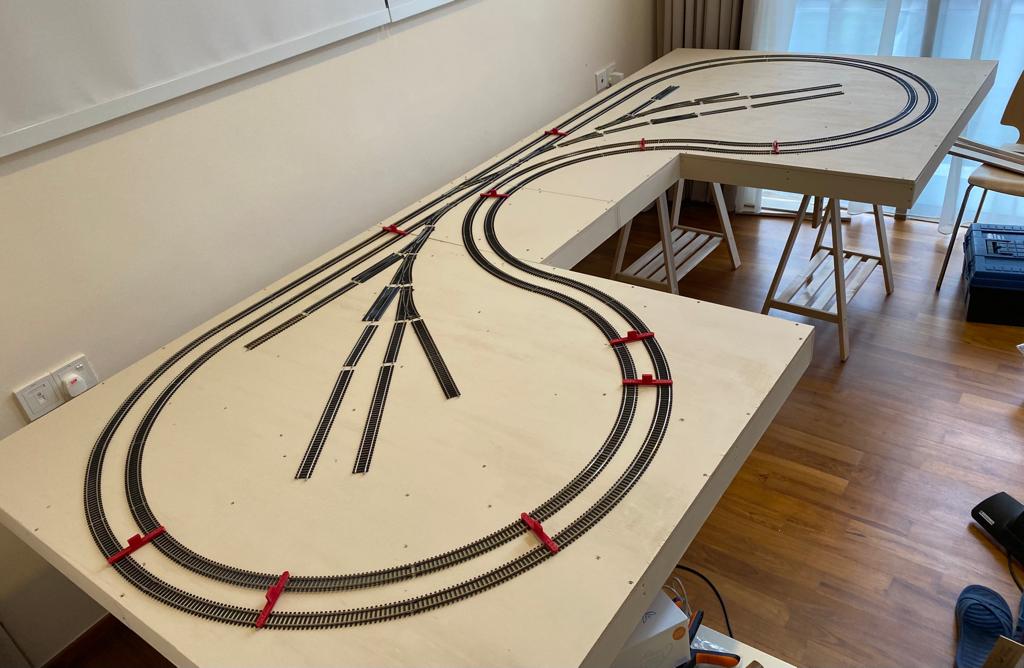
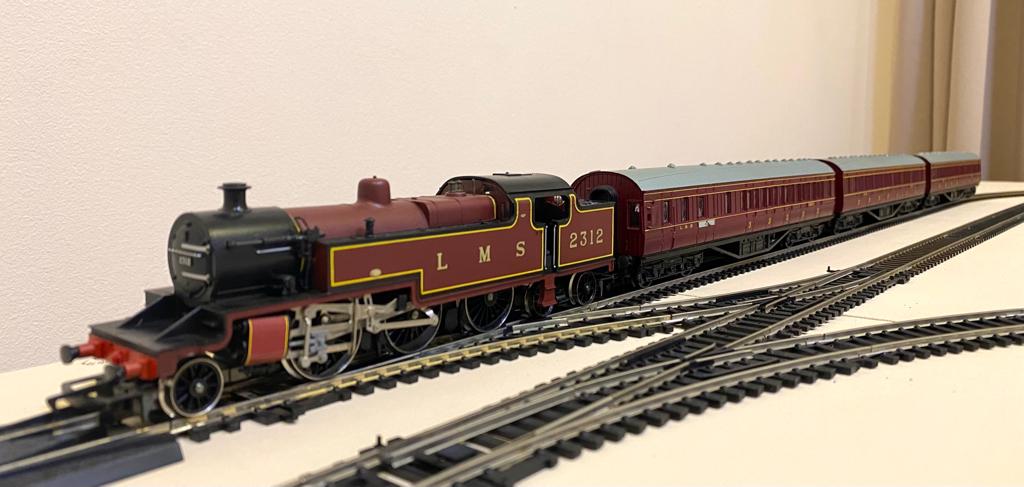
Final thoughts!
Building a baseboard was not as intimidating as I thought and I am glad that I did it. I will test the board over a few weeks before pinning the tracks down. I am still undecided on the plan for the sidings. I want to solder the tracks onto the board (where both boards are joined) so it could be easily aligned after dismantling. I plan to ballast the tracks, build a tunnel, have a station platform, etc, later. This will take a while to complete. I am still figuring out a diorama that will suit both the British and European scene. In the end of the day, I am no purist.
“Model trains are meant to run on tracks”, and I enjoy seeing them do so!
Daniel Khaw
dalkhaw@gmail.com
All named shops are based in Singapore.
